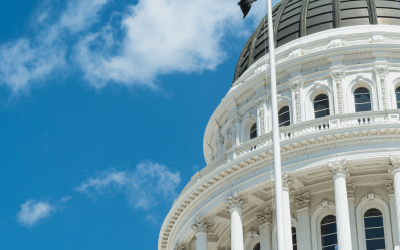In 2025, public sector teams are being stretched thin. New AI legislation is forcing job role reviews. Retirement waves are draining institutional knowledge. Budget timelines are tightening, while staffing demands keep growing. Add in increased scrutiny around DEI programs and budgets, and the pressure on HR and finance leaders has never been higher.
And yet, many teams are still planning reactively.
They wait until turnover spikes. Until exit interviews pile up. Until employee trust is already broken.
But smart workforce planning starts earlier, with listening.
Listen Early, Plan Smarter
Engagement surveys are more than a temperature check. When well-designed, they are your first signal of where things are cracking: morale, trust in leadership, burnout, retention risk.
According to OPM, nearly 1 in 4 federal employees say they feel burned out “very often” or “always.” That is not just a workforce wellness issue, it is a performance risk. And when burnout is ignored, it turns into resignation letters.
Surveys show you where that risk is building before it becomes a budget problem.
Spot Trends. Shift Resources.
Looking globally can spark ideas, even when policies and systems differ. Australia, for example, has taken a more proactive approach to public workforce listening. After annual surveys revealed deep morale issues and rising turnover intent, the government responded with expanded hiring and cultural reforms in key agencies. The data made the problem too visible to ignore.
It is not a perfect system, but it is proof that when leaders pay attention to engagement insights, they can act early and strategically.
This applies even more in the U.S., where agencies are under constant pressure to justify every headcount and budget line. Engagement data gives HR and finance leaders the evidence to plan, not guess.
It tells you:
- Where trust is breaking down
- Which departments are stretched too thin
- What is driving disengagement
- Where to allocate training, support, or staffing before issues escalate
Don’t Let Budget Season Catch You Off Guard
When engagement surveys are tied to workforce strategy, the results are not just soft, they are measurable. Gallup reports that highly engaged teams see:
- 17% higher productivity
- 41% lower absenteeism
- Up to 50% lower turnover
That is the kind of data public sector leaders can take into budget planning to protect what matters most.
Why June 2025 Is a Turning Point
Right now, agencies are finalizing next-year plans while still adapting to new policy demands, from AI use compliance to DEI audits and fiscal constraints. You can’t afford to plan in the dark.
This moment calls for sharper visibility into workforce health. It calls for tools that help you see around corners.
Where ZeroedIn Fits In
ZeroedIn’s platform includes a built-in Surveyor tool that makes it easy to collect, analyze, and act on employee feedback. It helps you:
- Launch targeted engagement surveys on your timeline
- Analyze trends in real time
- Connect feedback to workforce planning decisions
- Act before problems become emergencies
No waiting. No guessing. Just the clarity to lead with data.
Frequently Asked Questions
Why are engagement surveys important for government agencies?
Engagement surveys are important for government agencies because they provide early warning signs of workforce issues such as burnout, morale decline, and trust erosion. Public sector teams often feel pressure from tight budgets, policy changes, and staffing challenges, which can lead to disengagement and turnover. Engagement surveys give leaders visibility before problems escalate, allowing them to make proactive decisions about staffing, training, and employee support. Rather than waiting for resignations or low performance scores, agencies can use survey insights to protect workforce stability and maintain operational efficiency.
How do engagement surveys support workforce planning in government?
Engagement surveys support workforce planning by giving HR and finance leaders data they can act on. Survey responses reveal trends like rising stress levels, leadership concerns, and workloads that are becoming unmanageable. These insights help agencies make smarter resource decisions, such as reallocating staff, offering targeted training, or addressing leadership gaps. Instead of relying on assumptions, agencies can connect survey feedback to strategic priorities like retention, talent development, and succession planning. This makes workforce planning more accurate and defensible during budget reviews and audits.
What workforce challenges do public sector teams face in 2025?
In 2025, public sector teams face rising burnout, high retirement turnover, budget pressure, and new compliance requirements like AI legislation and DEI reporting. Many agencies operate with lean staff while mission demands continue to grow. These challenges can damage team morale and productivity if not addressed early. Engagement surveys help leaders understand how these pressures impact employees and where risk is building. Without this data, agencies are forced to react to problems instead of preventing them, which can lead to staffing gaps and operational disruption.
How can engagement survey insights improve government budgeting?
Engagement survey insights improve government budgeting by giving leaders measurable workforce evidence they can present during funding discussions. For example, survey data can show rising burnout levels in a department, supporting a staffing request before productivity declines. Data from Gallup shows highly engaged teams have 17 percent higher productivity and up to 50 percent lower turnover, which makes a strong budget justification. By linking survey results to performance risks and retention costs, agencies can make more strategic budget requests that protect critical programs and services.
How does ZeroedIn help government agencies run engagement surveys?
ZeroedIn helps government agencies run engagement surveys through its Surveyor tool, which is built for HR and workforce planning. Agencies can launch targeted surveys at any time, analyze results in real time, and connect survey insights to workforce trends like turnover risk and staffing levels. The platform makes it easy to identify problem areas and act before issues grow into budget or performance challenges. ZeroedIn also supports data-driven decision-making by combining employee feedback with workforce analytics, giving public sector leaders a complete picture of workforce health.




